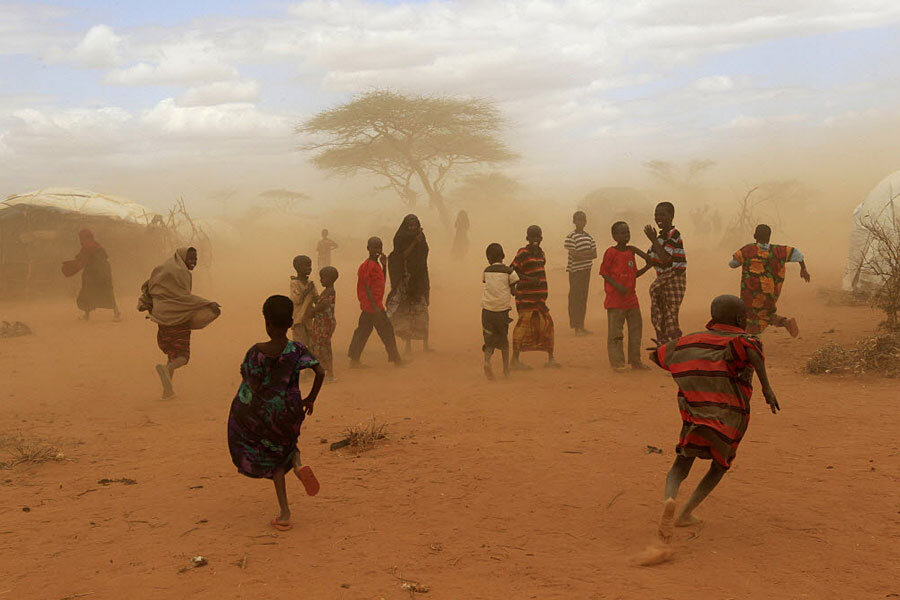Why climate change could leave the Horn of Africa parched
Loading...
Climate change is drying out the Horn of Africa at an alarming rate, say scientists.
Paleoclimatologists examined past moisture trends and found that the current drying trend is extreme, according to a paper published Friday in the journal Science Advances.
What "our paleoclimate records tell us is that this drying is really unusual in the context of the last 2,000 years," says study lead author Jessica Tierney, a paleoclimatologist at the University of Arizona.
"As greenhouse gases rise, we expect the region to get drier," Dr. Tierney told The Christian Science Monitor. Previous climate models had suggested that the region would see more rain as global temperatures rise. Tierney's work suggests that those models need to be revised.
"These models are designed to predict global climate change but sometimes aren’t perfect for every region of the world," she says.
And the Horn of Africa is particularly tricky.
"There’s actually two rainy seasons in this region," she explains. "The models are essentially missing the main rainy season, which is from March to May. The projections are all concerning the second rainy season in East Africa which is from September to November. They all suggest it’s going to get wetter."
But according to samples gathered on site, "we’re not seeing that wetter projection come to pass," Tierney says.
Tierney and her team examined a sediment core from the bottom of the Gulf of Aden. Trapped in the ancient layers of mud and sand were leaf waxes whose isotopic composition reveals how wet the landscape was at the time the leaves grew.
The region has been struggling with severe patterns of drought for decades.
A decrease in rainfall from March to May, the primary rainy season, means agriculture suffers.
With less moisture in the soil throughout the year, people in the region face more than water shortages; they face food shortages.
To top it off, the region is entangled in socio-political strife.
"Climate change can be a threat multiplier for regions that already have political and social stresses. And that’s certainly the case in East Africa," says Tierney.
Effects of the 2011 drought and famine in the Horn of Africa were magnified by little and slow support for those in need. Because of security concerns and access some regions could not receive aid.
During the 2011 crisis Semhar Araia, who was Horn of Africa regional policy adviser for Oxfam at the time, spoke to The Christian Science Monitor. “Droughts have become cyclical in the Horn, and this season has been the driest in years. But other factors include long-running conflict, a rise in food prices, and lack of long-term development and planning for future crises,” she explained. “It’s a combination of natural and man-made causes.”
And it may only get worse as global temperatures climb.
"The climate we’re going into now, we’ve never seen as a human species," says Tierney. "It’s totally different."








